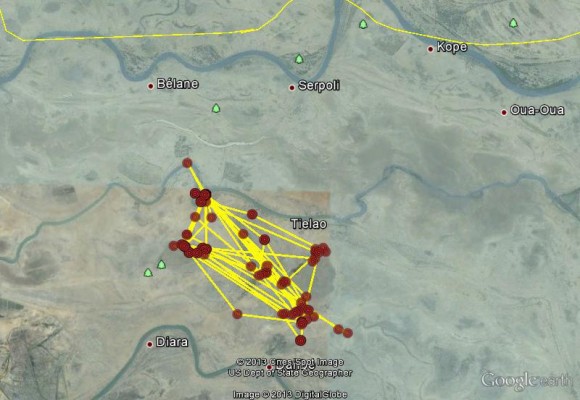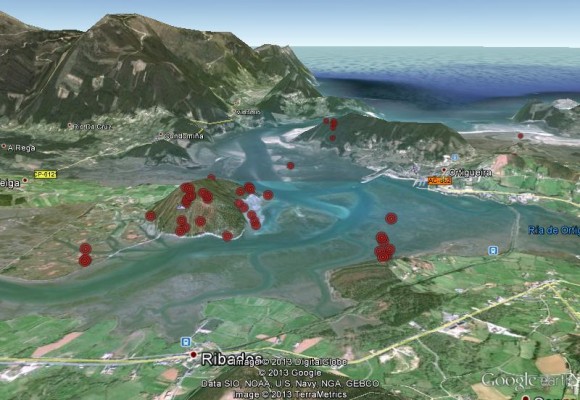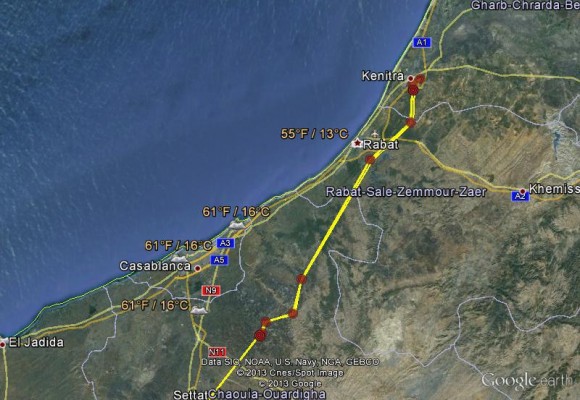Fearna is now living in quite a small area (13 square km) of wetlands beteen two small rivers south of the main stream of the River Senegal. Life gets easier once all the adult ospreys have gone north and the fishing is left to the juveniles.
Settled
Still waiting in Galicia
Rothiemurchus remains wsaiting on the Ortigueira estuary in NW Spain – spending a lot of time at a wooded hill on the west side of the estuary opposite Ortigueira. He is getting so late it’s a pity he would not breed in Spain! Rain
ing there today with a north wind over the sea, but better tomorrow and sun on Friday. Hurry up!
Moved to NW estuary of Spain
Still same area
Returns to Galicia
NW into Portugal again
Rothiemurchus roosted on the banks of the River Guadalquivir at La Senuela on night of 18th/19th April and next morning moved across the river and settled there 0700-0800GMT before heading NW over Isla Mayor. He flew on NW between Seville and Huelva and after 1400hrs flew across the border into Portugal. At 1600 and 1700 was near a small dam 15 km SW of Moura and then settled nearby for the night in olive farms after a day’s flight of 181 km. Once again he seem to be heading for Galicia and the long crossing of the Bay of Biscay – hope the winds are not strong easterly
Arrives in Spain
Slow day
No news of Fiddich
On 12th April, Gambian bird guide JJ and Colin from Kantong, who are friends of Tim Mackrill, made a special over land drive of over 200 miles along the whole of The Gambia to visit the village where Fiddich’s transmitter has been giving signals. It was a remote village in Senegal near the Gambia River and unfortunately they were unable to learn much about Fiddich from the villagers. From the data I am pretty sure unfortunately that Fiddich is dead. Today 14th April the transmitter has sent signals again suggesting the bird and/or transmitter have been put outside again. JJ left his details so may be we will lern more about what happened. It was a tremendous effort by JJ and Colin, and we are very grateful. We really need to know more about the behaviour of the juveniles and why individuals suddenly leave favoured wintering locations and why if they travel inland they seem to run into problems. There are clearly problems for them from competion with adults and probably with the drying up of temporal wetlands.
Definitely back at nest
At midday on 12th April I saw Morven at her nest for the first time; she was perched on the top of next door Scots pine and I could see her transmitter and colour ring. She fluttered down to the nest to give intruder calls as an osprey passed overhead and then slowly flew off to join it. Great that she has made it back after a difficult spring migration weather wise.


























